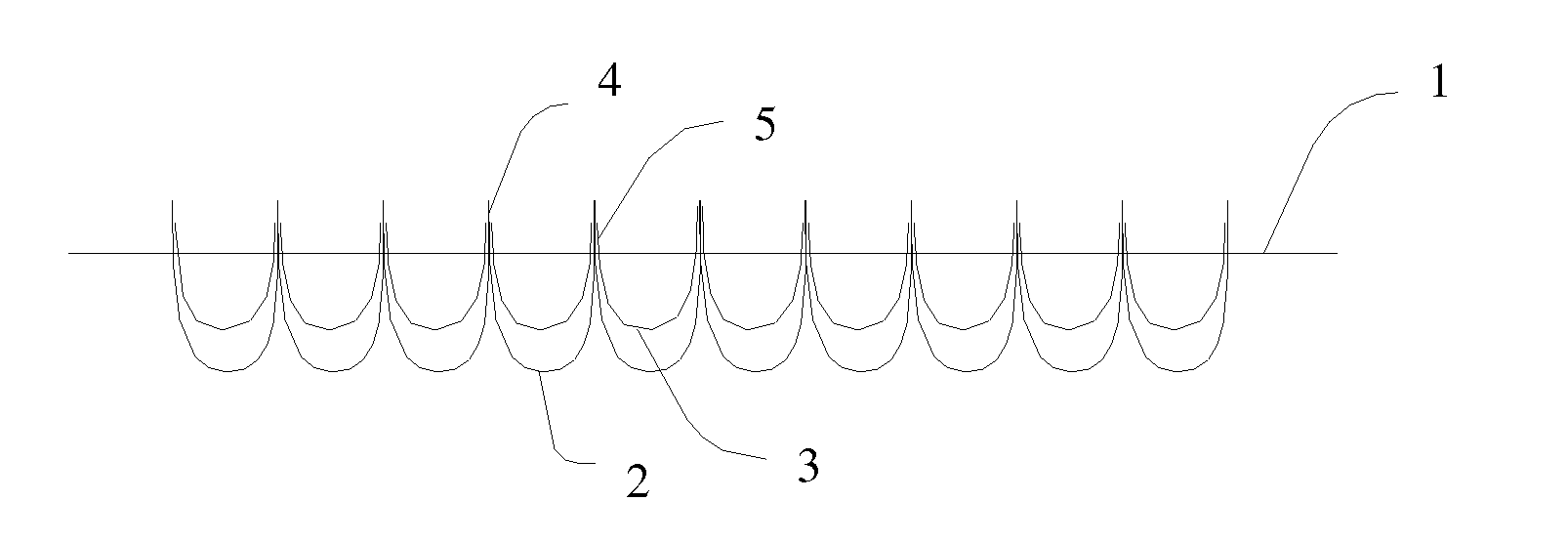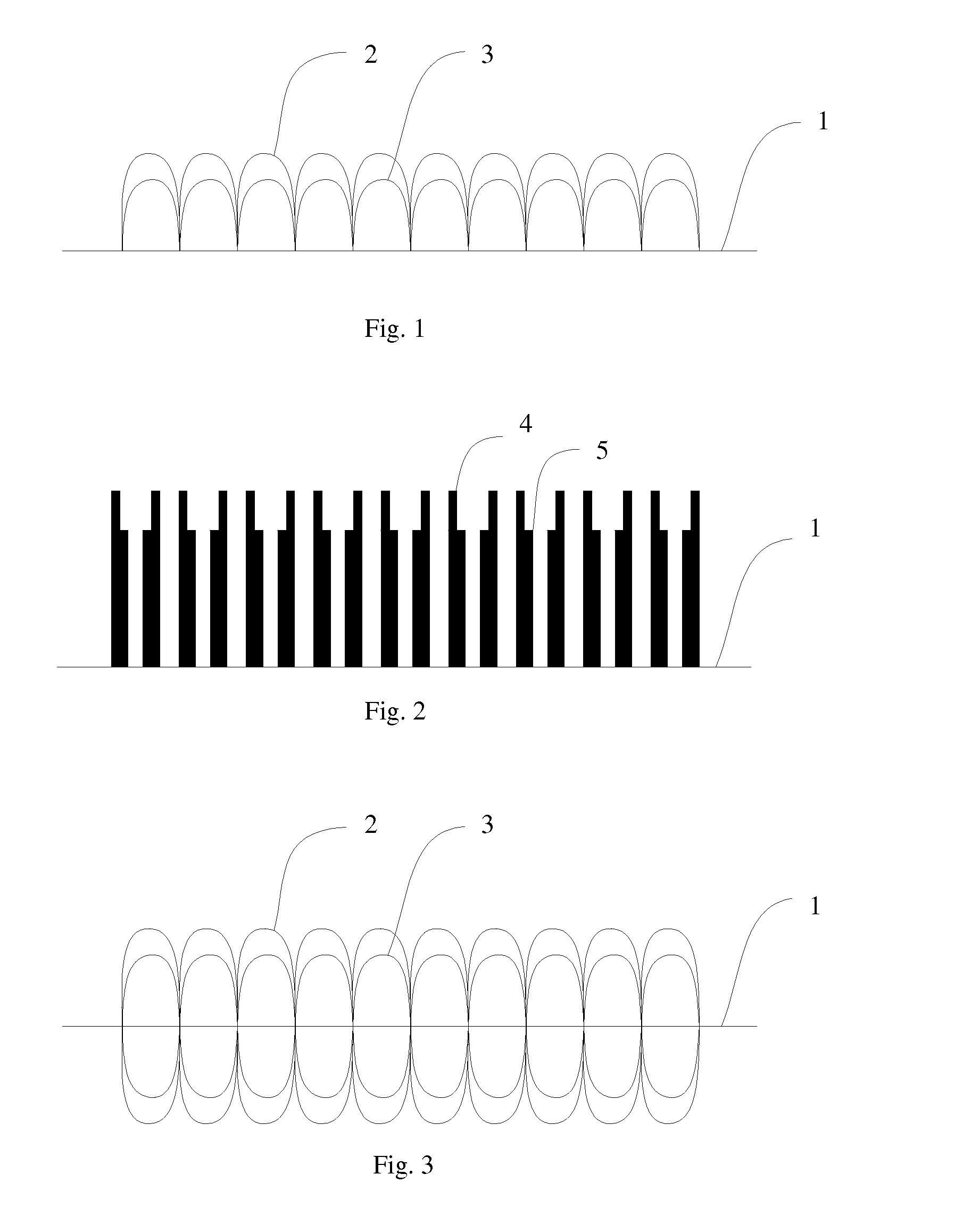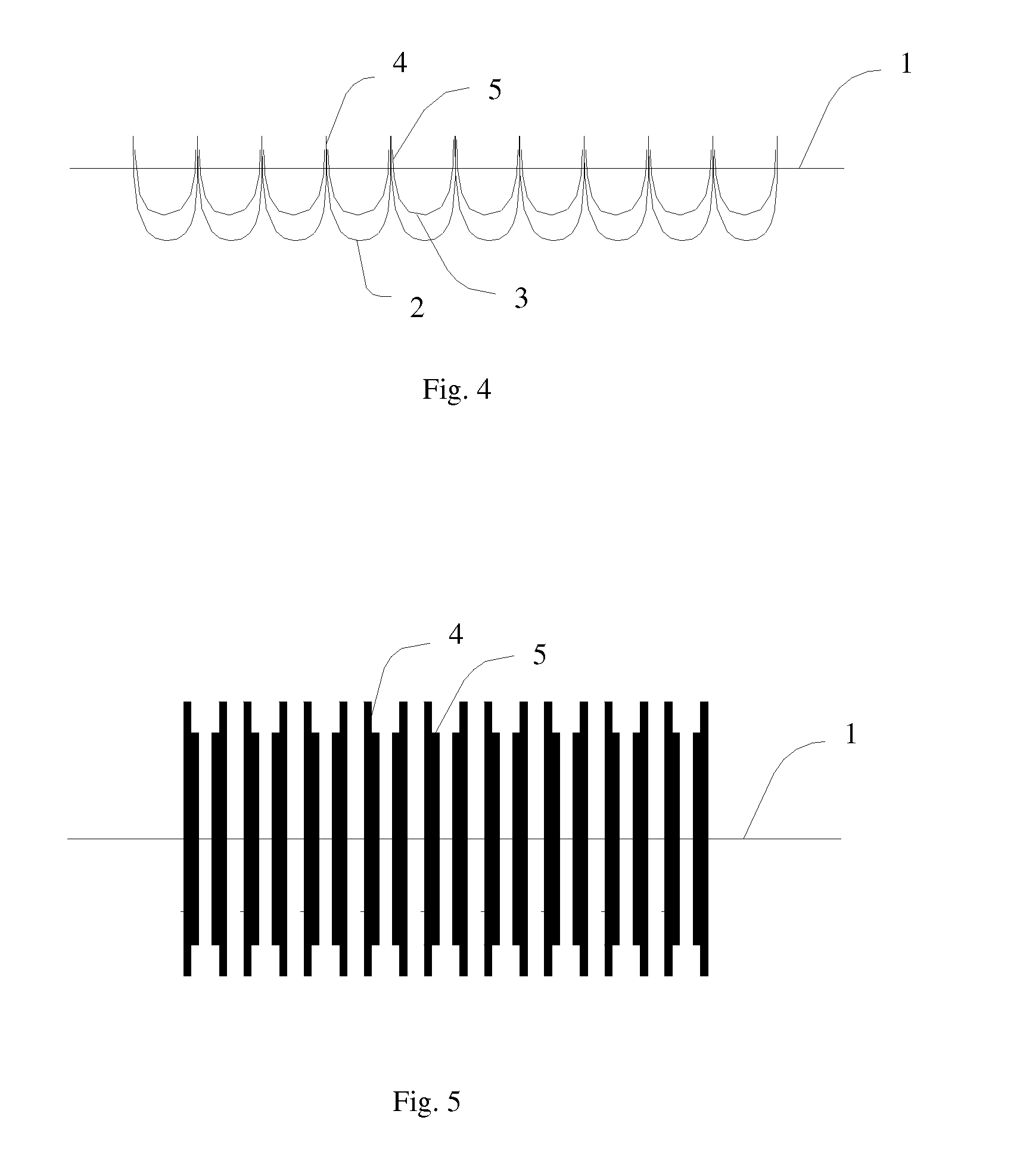Fabrics having double layers of terry or pile
a technology of terry or pile fabric and double layer, applied in the field of fabric materials, can solve the problems of poor size stability of cotton, poor layering sense of conventional terry or pile fabrics, and high stiffness of linen, and achieve the effects of good layering sense, strong practicability, and strong practicability
- Summary
- Abstract
- Description
- Claims
- Application Information
AI Technical Summary
Benefits of technology
Problems solved by technology
Method used
Image
Examples
example 1
Manufacturing Method Example 1
[0042]This manufacturing method may be used to produce the fabric shown in FIGS. 1-5.
[0043]The method employs a knitting process, which includes the following steps: preparing packages, warping, preparing warp beam, knitting, unwinding, splitting, washing, dyeing and setting.
[0044]The terry materials on the first bar and on the third bar are 150D / 72F DTY of PET / PA composite fiber and 32S cotton yarn. Materials on the second bar are 150D / 72F DTY of PET / PA composite fiber. Materials on the fourth bar are 200D / 96F FDY of PET fiber. The ratio of terry materials on the first bar and the third bar is 1:1. After warping and knitting the grey fabrics are produced. The finished fabrics are produced after post-processing.
[0045]The post-processing includes unwinding, splitting, washing, dyeing and setting.
[0046]Beam warping is used on warping machine DS21 / 30.
[0047]The fabrics may be knitted on warp knitting machine HKS4-1 which is E24 106 inch tricot. The specific...
example 2
Manufacturing Method Example 2
[0058]This manufacturing method may be used to produce the fabric shown in FIGS. 1-5.
[0059]The method employs a weaving process, which includes winding, warping, weaving, dyeing and setting.
[0060]300D DTY of PET / PA composite fiber terry alternate with 20S cotton yarn terry in warp terry. The ground warp is 300D DTY of PET / PA composite fiber. The weft is 300D FDY of PET fiber. After warping and weaving the grey fabrics are produced. The finished fabrics are produced after post-processing.
[0061]The arrangement ratio of terry warp and ground warp is 1:1 or 2:1 or 2:2. The arrangement ratio of natural fiber and microfiber in terry is 1:1 or 1:2 or 2:1.
[0062]The post-processing includes unwinding, splitting process, washing, dyeing and setting.
[0063]In one embodiment, single-side pile cutting treatment is done on the terry fabrics. After post-processing, single-side pile fabric or one-side terry and one-side pile fabrics are produced. In another embodiment, ...
example 3
Manufacturing Method Example 3
[0080]This manufacturing method may be used to produce the fabric shown in FIGS. 1-5.
[0081]The method employs a knitting process, where the microfiber terry alternate with the natural fiber terry or the blend yarn terry. The ground stitch materials are synthetic filament or / and natural fiber or / and blend yarn.
[0082]The post-processing contains unwinding, splitting process, washing, dyeing and setting.
[0083]In one embodiment, single-side pile cutting treatment is done on the terry fabrics. After post-processing, single-side pile fabric or one-side terry and one-side pile fabrics are produced. In another embodiment, double-side pile cutting treatment is done on the terry fabrics. After post-processing, double-side pile fabrics are produced.
PUM
| Property | Measurement | Unit |
|---|---|---|
| temperature | aaaaa | aaaaa |
| temperature | aaaaa | aaaaa |
| temperature | aaaaa | aaaaa |
Abstract
Description
Claims
Application Information
 Login to View More
Login to View More - R&D
- Intellectual Property
- Life Sciences
- Materials
- Tech Scout
- Unparalleled Data Quality
- Higher Quality Content
- 60% Fewer Hallucinations
Browse by: Latest US Patents, China's latest patents, Technical Efficacy Thesaurus, Application Domain, Technology Topic, Popular Technical Reports.
© 2025 PatSnap. All rights reserved.Legal|Privacy policy|Modern Slavery Act Transparency Statement|Sitemap|About US| Contact US: help@patsnap.com



